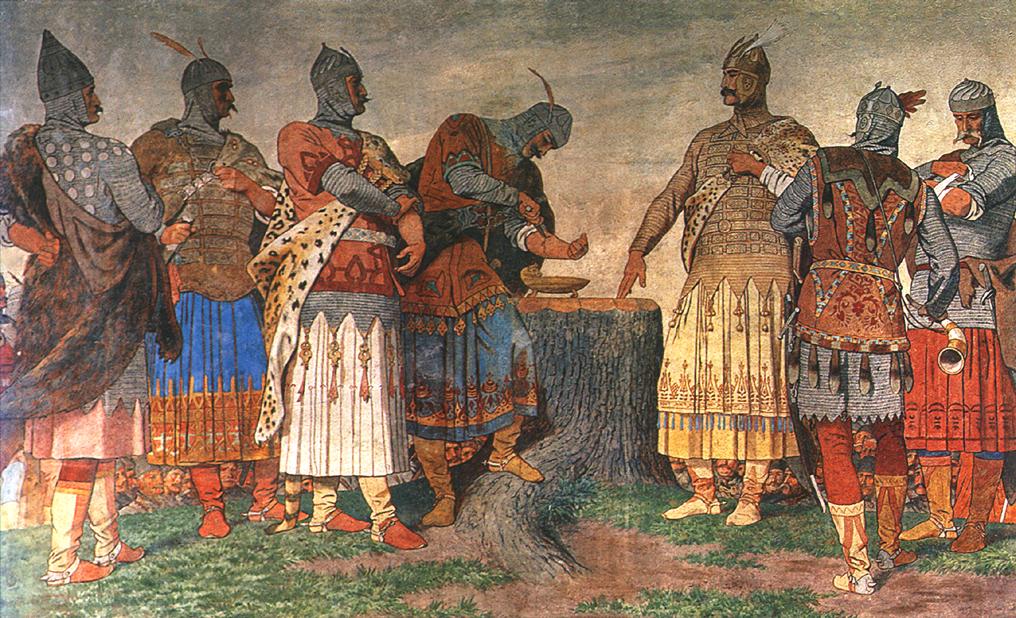Legend of the Bloodcontract – Kecskemét – Blood Contract painting in the Town Hall by Bertalan Székely
Fact of the Hungarian figure „Myth of the Hungarian land-taking – Ópusztaszer”
Part of the „The story of the beginning” topic
The legend of the Blood Contract is a cornerstone of Hungarian national identity, symbolizing the unity and determination of the Magyar tribes as they forged their new homeland in the Carpathian Basin. This historic pact, said to have been made around 895 AD, is immortalized in a famous painting by Bertalan Székely, displayed in the Town Hall of Kecskemét.
According to the Chronicle of Anonymus, the seven Hungarian chieftains, the ‘hetomuger’, made a blood contract and raised a prince above themselves. They poured their blood into a vessel and agreed on five points. 1. That the prince should always come from the lineage of Álmos. 2. That all should share in the jointly acquired goods. 3. That the chieftains and their sons should never be excluded from the council of the prince and the positions of the state. 4. That if any of their descendants were disloyal to the prince, he should be killed. 5. That if any of the descendants of the contractors should break their oath, he should be cursed.
The blood contract is referred to by many as the oldest „constitution” of Hungary, but one that survives only in this chronicle. The event is not mentioned in later chronicles, but this does not mean that it is fictional, since similar rituals and brotherly adoption ceremonies are documented among other steppe nomads. In contrast, the points of the contract reflect the thinking of the time of Anonymus, the 1200–1210s. There are several explanations for the choice of a single prince, but presumably, the tribal alliance was created against the Pechenegs’ threat and/or to ensure the centralised execution of the Land-taking.
Kecskemét’s Town Hall, where Székely’s painting is displayed, serves as a cultural and historical landmark. The painting is a focal point for visitors and residents alike, reminding them of the deep roots of their national identity and the enduring values of loyalty and unity that have shaped Hungarian history. It connects the modern town to its ancient past, providing a tangible link to the legendary deeds of the Magyar forebears.





